Wn346 Les Asselins la Gouinerie, Omonville la Rogue

Details
A Kriegsmarine were in the process of building a heavy detection station consisting of a Mammut Fu.MO 51 device on a V143 bunker.
Fu.MO - Funkmess-Ortung, Radar - direction finder, active ranging.
Interesting I search as much as I can to find detail and this is what I found:
"Even a simplified listing of radar type designations, with their technical particulars, would require a intensive research in German and foreign archives". Says it all.

Mammut Fu.MO 51.
Wn346 Les Asselins la Gouinerie, Omonville la Rogue
Details
Wn346 Les Asselins la Gouinerie, Omonville la Rogue

26 January 2007
Details
Bunker type is a V143 Mammutstand, a multi room bunker to hold a large radar array. This type just sent out a large beam, imagine it being dark and you switch on a light switch. When a ship/aircraft passed through it. A shadow would show up. Very like the British Chain Home radar. It could not sweep the sky like the more modern types.

V143 plan..

Mammut Fu.MO 51
Wn346 Les Asselins la Gouinerie, Omonville la Rogue
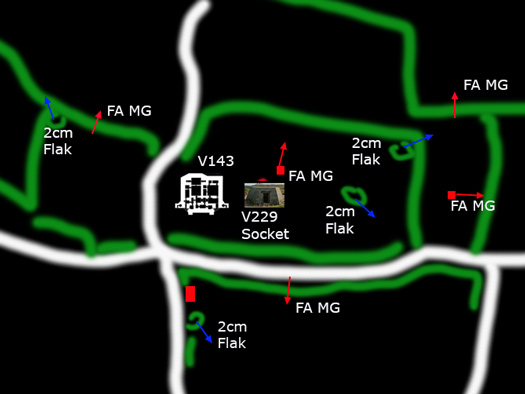
Plan
Details
Station Kriegsmarine.
2.Funkmess-Abtelung.
1 x V143 radar bunker.
1 x V229 Socket.
4 x SK/Flak 2cm.
3 x Unterstand.
1 x Vf/MG Stand.
1 x Wasser.
2 x SK?.
1 x Mammut Fu.MO 51.
1 x Fu.MG Seetakt Gema Fu.MO 2.
.jpg)
2cm Flak.

Vf/MG Stand.

Fu.MG Seetakt Gema Fu.MO 2.
Wn346 Les Asselins la Gouinerie, Omonville la Rogue
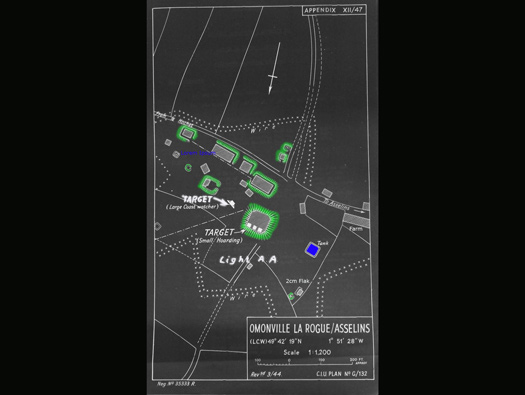
AIR 40-1667 Rhubarb - Appendix XII Coastal Radar Stations
Details
Allied plan of the radar site. Rhubarb was the RAF's code name for German radar attacks. Some of the sites were bombed by heavy bombers but others were attacked by bomb dropping and rocket firing Typhoons.
Near the Hameau des Asselins lies the most interesting of German bunkers.
This is a rare Mammut radar installation (named Gouesneraie), used not only
for detecting shipping, but it also gave the range for the guns to either side of
it. The bunker is quite a rare V143 type of which only four were built. The
Mammut radar was called hoarding by the British, because of its size and
shape. It sat on three huge concrete pillars sitting on top of the bunker. It was
a long range radar having an effective range of 300 kilometres, and it gave an
incredible accuracy in its findings. The cables that linked the antenna to the
electronics below in the bunker can still be seen. There were two entrances to
the control centre, both protected by machine gun posts. Inside the condition
of the bunker is good and none of the heavy metal doors have been taken for
scrap. None of the equipment remains as all radar and electronic equipment
was taken for further use by the liberating Americans. The floor of many of
the internal rooms show just how much thought went into its construction.
Cable ducts and special walkways were formed into the concrete, much as you
would have found in a computer during the 1960's. You can see evidence of
the taking of the radar station by the Americans on the left hand entrance. by
John Flaherty.

Loading of RP-3 rockets fitted with 60 lb semi-armour-piercing high-explosive warheads onto a Hawker Typhoon.

Typhoon on or after D-Day.
Wn346 Les Asselins la Gouinerie, Omonville la Rogue
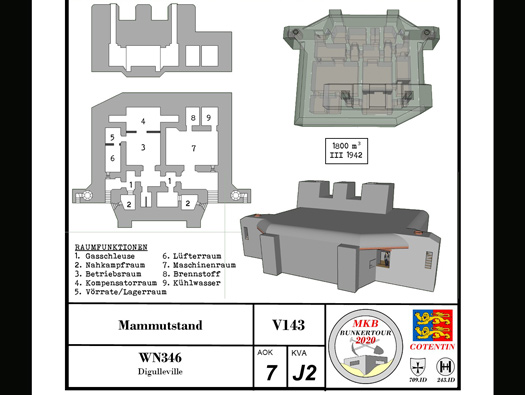
MKB Bunkertour
Details
MKB Bunkertour's plan of the V143 at Les Asselins.
Wn346 Les Asselins la Gouinerie, Omonville la Rogue
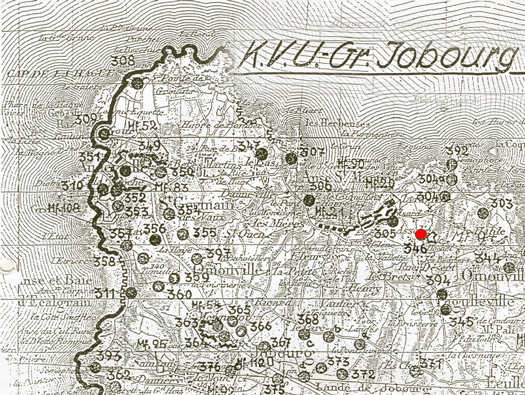
1944 German Plan
Details
Wn346 situated on a small hill overlooking the north coast.
Wn346 Les Asselins la Gouinerie, Omonville la Rogue

26 January 2007
Details
V143 Mammutstand.
The close combat defence covering the entrance.

Entrance..

Plan.

Close combat embrasure.
Wn346 Les Asselins la Gouinerie, Omonville la Rogue

26 January 2007
Details
V143 Mammutstand.
Close combat on the inside and showing that something rather heavy was fired at it.
Wn346 Les Asselins la Gouinerie, Omonville la Rogue

26 January 2007
Details
V143 Mammutstand.
434P01a door.

434P01a door.

Top door.

Plan.
Wn346 Les Asselins la Gouinerie, Omonville la Rogue


26 January 2007
Details
V143 Mammutstand.
434P01a door.

434P01a door..
Wn346 Les Asselins la Gouinerie, Omonville la Rogue


26 January 2007
Details
V143 Mammutstand.
Another close combat embrasure damaged.

Plan.

Close combat embrasure.
Wn346 Les Asselins la Gouinerie, Omonville la Rogue

26 January 2007
Details
V143 Mammutstand.
Into the interior. Workshop.

Plan.
Wn346 Les Asselins la Gouinerie, Omonville la Rogue

26 January 2007
Details
V143 Mammutstand.
Cable inlets. These cables came through a large steel pipe set into the concrete.

Internal cable and cabinet layouts.

A piece of armoured cable.
Wn346 Les Asselins la Gouinerie, Omonville la Rogue

26 January 2007
Details
V143 Mammutstand.
Workroom.

Plan.

Marine phones inside a bunker.
Wn346 Les Asselins la Gouinerie, Omonville la Rogue

26 January 2007
Details
V143 Mammutstand.
Compensator room.

Plan.
Wn346 Les Asselins la Gouinerie, Omonville la Rogue

26 January 2007
Details
V143 Mammutstand.
Recess in roof to hold a water tank.

Plan.
Wn346 Les Asselins la Gouinerie, Omonville la Rogue

26 January 2007
Details
V143 Mammutstand.
Water for cooling was very important in radar bunkers. The recess in the roof looks like a it held a water tank. One of the straps are still there.

Plan.
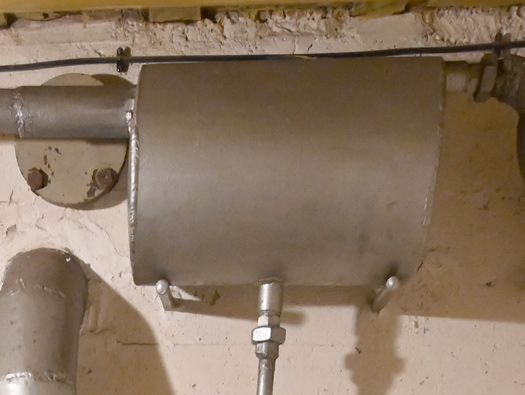
A water tank of the type that may have been there..
Wn346 Les Asselins la Gouinerie, Omonville la Rogue

26 January 2007
Details
V143 Mammutstand.
Water stop tap.
Wn346 Les Asselins la Gouinerie, Omonville la Rogue

26 January 2007
Details
V143 Mammutstand.
There would have been a large door here, some were steel sliding doors.

26P8 sliding door.
Wn346 Les Asselins la Gouinerie, Omonville la Rogue

26 January 2007
Details
V143 Mammutstand.
Engine room with ducting under the floor for cables.
Wn346 Les Asselins la Gouinerie, Omonville la Rogue

26 January 2007
Details
V143 Mammutstand.
Engine room with ducting under the floor for cables.
Wn346 Les Asselins la Gouinerie, Omonville la Rogue


26 January 2007
Details
V143 Mammutstand.
Ducting under the floor for cables showing the cable inlets and armoured cable.
Wn346 Les Asselins la Gouinerie, Omonville la Rogue

26 January 2007
Details
V143 Mammutstand.
The second entrance now filled in.

Plan.
Wn346 Les Asselins la Gouinerie, Omonville la Rogue

26 January 2007
Details
V143 Mammutstand.
WW2 German barbed wire.

German barbed wire..
Wn346 Les Asselins la Gouinerie, Omonville la Rogue


26 January 2007 German radar sites in 1942
Details
V143 Mammutstand.
One of the tree concrete pylons to hold the array.
A plan of radar sites in and around the peninsular.

The defence.

Gemma valve.
Wn346 Les Asselins la Gouinerie, Omonville la Rogue

26 January 2007
Details
Outside some very simply made buildings.
Wn346 Les Asselins la Gouinerie, Omonville la Rogue

26 January 2007
Details
The low entrance.
Wn346 Les Asselins la Gouinerie, Omonville la Rogue

26 January 2007
Details
The steps into the room.
Wn346 Les Asselins la Gouinerie, Omonville la Rogue

26 January 2007
Details
So I wonder what it was for.
The block looks similar to those found in Channel Island army artillery battery command bunkers – they supported a big round plotting table.
Hope that helps,
Mark Page.
Thank you Mark. I can imagine a large plotting table sat there. I am not sure if this was originally a French
FCP as it looks very basic. As you see, the last time I was there was in<h3> </h3> 2007.
Wn346 Les Asselins la Gouinerie, Omonville la Rogue
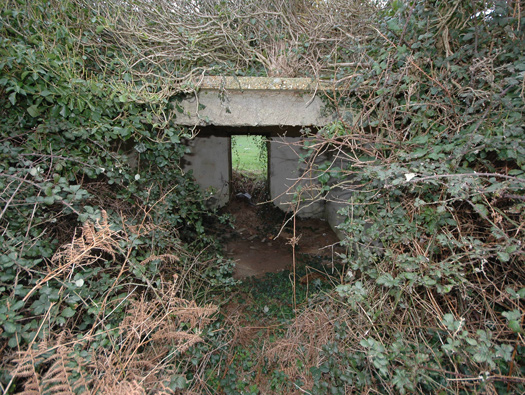
26 January 2007 John Flaherty
Details
FA/MG positions in the hedge row.

The defence.
Wn346 Les Asselins la Gouinerie, Omonville la Rogue
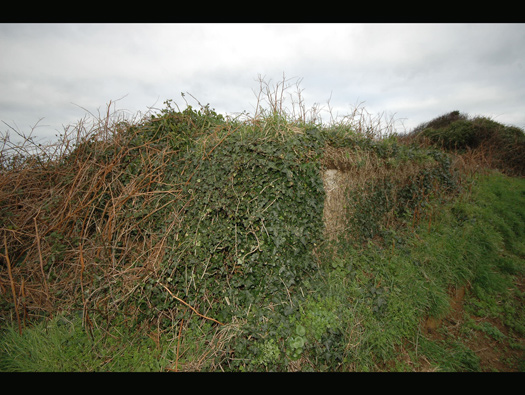
26 January 2007 John Flaherty
Details
Another small room.

The defence.
Wn346 Les Asselins la Gouinerie, Omonville la Rogue
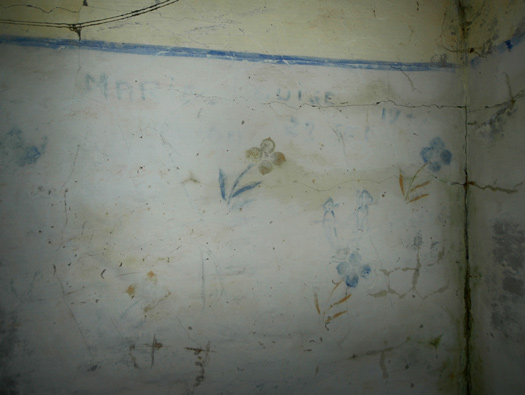
26 January 2007 John Flaherty
Details
Hand painted walls.
Wn346 Les Asselins la Gouinerie, Omonville la Rogue
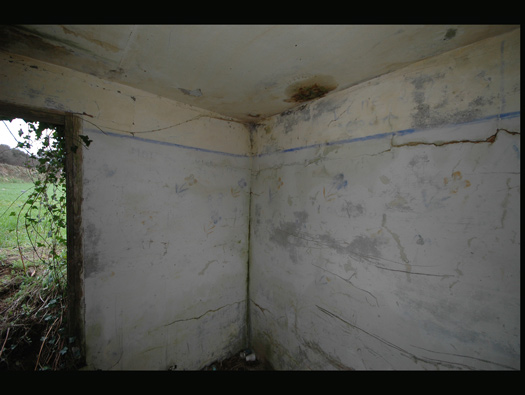
26 January 2007 John Flaherty
Details
Home from home.
Wn346 Les Asselins la Gouinerie, Omonville la Rogue

ADM 202/598/30 Assault Unit - Photos - Vol 1’
Details
Known as '30 Assault Unit', they took part in the major campaigns of the Second World War, landing on the Normandy beaches and helping to liberate Paris. 30AU's final amazing coup was to seize the entire archives of the German Navy - thirty tons of documents.
Although this was the American sphere of influence 30AU came here to Asselins to look over the bunker for any technical information. They were a mix of Commandos and Naval Officers with a Troop of Commandos to add muscle. They took the Naval HQ in Cherbourg, visited all the sites on Manche and then went into Brittany.
.jpg)
Commander Ian Fleming an Intelligence Officer and took charge of 30 Assault Unit.
Wn346 Les Asselins la Gouinerie, Omonville la Rogue

ADM 202/598/30 Assault Unit - Photos - Vol 1’
Details
I think a lot was destroyed, the naval officers had plenty of time to damage anything of importance, but also I do think Asselins was not yet operational.

B Troop 33Royal Marine section 30AU Jan1945.

Radar operator.
Wn346 Les Asselins la Gouinerie, Omonville la Rogue

ADM 202/598/30 Assault Unit - Photos - Vol 1’
Details
In the background it does look like a Fu.MO 215 Seeriece radar rather damaged. There is a V229 base in the radars area.

Fu.MO 215 Seeriece radar on a V229 base.

V229 base.
Wn346 Les Asselins la Gouinerie, Omonville la Rogue
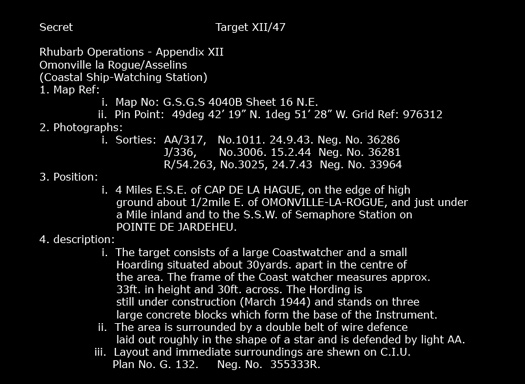
AIR 40-1667 Rhubarb - Appendix XII Coastal Radar Stations
Details
RAF Bomber Command file on radar targets, the secret designation for radars was Rhubarb. In his very informative book, "Most Secret War" RV Jones writes about going to RAF Typhoon Squadrons and talking to the pilots about the radars and then asking them to attack them one at a time. A bit like "Putting the lights out". The pilots kept asking why they were not allowed to attack a certain radar in northern France. RV (as he was known) kept telling them "No leave it alone". Well D-Day happened and the Fortitude deception plan used that radar to see fake images coming from small ships with radar reflectors, several bomber squadrons dropping Window, radar reflecting materials. These spoofs completely fooled the German intelligence service. The day after D-Day, RJ visited the squadron and told them, OK get the Radar. They literally ran to their planes, jumped in and went out and completely smashed the place.

RV Jones..

RAF bombers dropping Window.
Wn346 Les Asselins la Gouinerie, Omonville la Rogue
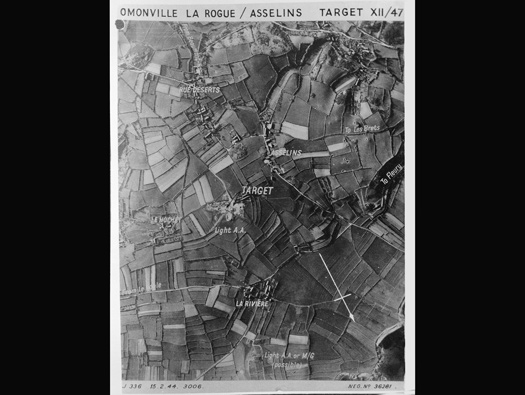

AIR 40-1667 Rhubarb - Appendix XII Coastal Radar Stations
Details
Rhubarb target air photo.
Wn346 Les Asselins la Gouinerie, Omonville la Rogue
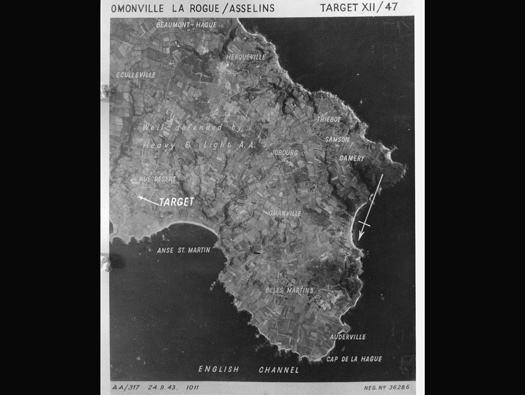
AIR 40-1667 Rhubarb - Appendix XII Coastal Radar Stations
Details
Rhubarb target air photo.
Wn346 Les Asselins la Gouinerie, Omonville la Rogue

26 January 2007
Details
 Norway (coming soon!)
Norway (coming soon!)
 France
France
 Great Britain
Great Britain







.jpg)






































































.jpg)












